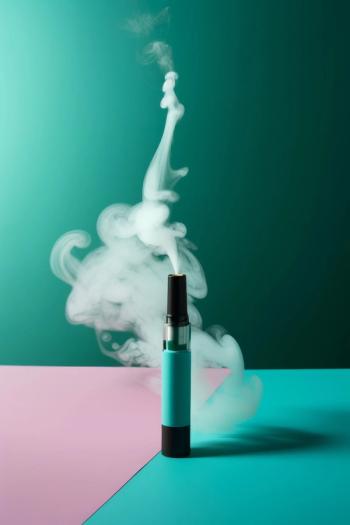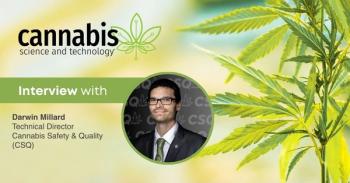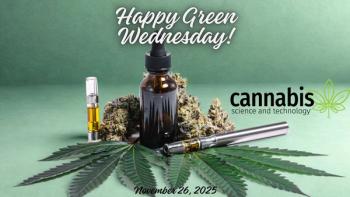
Cannabis Science and Technology
- July/August 2021
- Volume 4
- Issue 6
Cannabis is Medicine… Formulate it Like Medicine!

How can cannabis businesses start formulating like the pharmaceutical industry and why it’s important to do so.
As part of its drug approval process, the US Food and Drug Administration (FDA) requires active pharmaceutical ingredients to be safe and effective, and all other ingredients be recognized as safe. The FDA also requires stability studies on all formulations in their original packaging. The foundation for all of this is significant amounts of in-house testing.
How cannabis businesses should implement these ideas is discussed.
In my definition formulation is the art and science of choosing the amounts and molecules to comprise a pharmaceutical product, such as an ingested medicine or a topical. We will begin with a discussion of how the pharmaceutical industry is required to create and test their formulations.
The Pharmaceutical Industry Formulation Paradigm
Let’s imagine we are going to make an aspirin tablet (in the following discussion I will focus on medicines containing small molecules, the formulation process for biologics is similar in principle but can differ in detail). This process is illustrated in Figure 1.
The molecule in an aspirin tablet that provides pain relief, fights fevers, and so forth is called acetylsalicylic acid. This molecule is known as the active pharmaceutical ingredient (API), the molecule that has the properties we value. Before any API is sold to the public it must be tested for safety and efficacy, which means it can’t harm people and must have some pharmacological activity that is useful to us. This process for acetylsalicylic acid was accomplished long ago. Additionally, before formulating a batch of aspirin tablets, the API material in question needs to be tested for identity, purity, and toxins such as heavy metals and pesticides.
The aspirin tablets you buy at the store contain many things besides acetylsalicylic acid. These other ingredients are called excipients, the dictionary definition of which contains the phrase “a pharmacologically inert substance” (1). Excipients can consist of fillers, binders, and processing aids. The formulation of medicines, particularly the selection of the excipients to use and their amounts, is typically the job of pharmacists and pharmacologists. Excipients are often chosen from a list of materials published by the United States Food and Drug Administration (FDA) as being “generally recognized as safe” (GRAS) for ingestion by human beings (2). For example, some aspirin tablets contain starch, which is also present in our food and hence not considered hazardous. So, only excipients that are GRAS should be used in formulations. The final recipe for an aspirin tablet contains a list of each ingredient used. This list typically appears on the aspirin bottle in descending order of how much of each ingredient is present. Despite the known safety of excipients, the excipient material being used to make a given batch of tablets still needs to be tested for identity, purity, toxins, and so forth. In summary then, all the ingredients in an aspirin tablet are tested prior to it being turned into a tablet.
However, this is not enough. Testing also needs to be performed after every manufacturing step to insure it was performed properly and to maintain product quality. For example, the ingredients in aspirin can be blended using a blender like the one seen in Figure 1. The blending process is monitored so that a uniform blend of the ingredients is obtained. This can be done by infrared (IR) spectroscopy (3). After the API and excipients are blended they are compressed into a tablet using a tableting press as seen in Figure 1. The potency of tablets as they leave the press can be measured to insure individual tablets contain the correct amount of API. This can also be done by IR spectroscopy (4). Lastly, bottles of aspirin are collected before shipment for testing as well to insure the final product has the correct formulation and has not been adulterated.
Pharmaceutical formulations undergo stability studies in their original packaging. Stability needs to be tested because not all molecules are stable sitting on a shelf for long periods of time, and of course we do not want to give patients incorrect doses of API or poison them with unknown breakdown products. Performing the stability study in the packaging in which it will be sold is important because toxins can leach into the product from the packaging, and the packaging impacts variables, such as humidity and temperature, which can affect the breakdown rate of medicines (5).
The pharmaceutical industry formulation paradigm then involves taking safe and effective APIs, formulating them with generally recognized as safe excipients, and then testing after each and every manufacturing step to make sure the material in question contains the right ingredients in the right concentrations and has not been adulterated. Finally, the formulation must be stability tested in its original packaging to insure no problems crop up with it upon storage.
How Should the Cannabis Industry Formulate?
To see how the pharmaceutical industry testing paradigm can be adapted to the cannabis industry, let’s imagine we are going to make a cannabidiol (CBD) in medium-chain triglyceride (MCT) oil tincture. The manufacturing process for this is illustrated in Figure 2.
The first step in this process is growing and curing the hemp that contains the CBD. The hemp farmer needs to test the potency of the crop—our raw material—to stay under the 0.3% total tetrahydrocannabinol (THC) legal limit, and so experiments can be performed to maximize CBD levels and hence profit, and to know when to harvest (6,7). Extractors need to test biomass as it comes in the door to insure they are getting the potency they are paying for (see my previous column for the story of how one extractor saved thousands of dollars by testing biomass at the point of purchase [8]). Also, biomass should be tested for pesticides, heavy metals, and other toxins as experience has shown these can concentrate during the manufacturing process.
Keeping in step with the pharmaceutical industry testing paradigm, extractors need to test after each manufacturing step including extraction (9), winterization, decarboxylation (10), and distillation (11). I know of extractors who, by testing throughout the manufacturing process, have increased oil yield by upwards of 20%, quickly paying for their investment in testing equipment. Lastly, the tincture needs to be tested to insure the correct dosage, get the label claims right, and not waste CBD by putting too much in (12). Before this tincture is put on the market it needs to be tested for stability in its original packaging.
How Does the FDA View Cannabis Medicines?
The mother lode of information about how the FDA views cannabis medicines as of October 2020 can be found here (13). I strongly recommend all cannabis businesses read this document. Its contents are so important that I feel the need to quote it in part:
“To date, the FDA has not approved a marketing application for cannabis for the treatment of any disease or condition. The agency has, however, approved one cannabis-derived drug product: Epidiolex (cannabidiol), and three synthetic cannabis-related drug products: Marinol (dronabinol), Syndros (dronabinol), and Cesamet (nabilone). These approved drug products are only available with a prescription from a licensed healthcare provider. Importantly, the FDA has not approved any other cannabis, cannabis-derived, or cannabidiol (CBD) products currently available on the market.”
How Is the Cannabis Industry Actually Formulating?
I have been using this soapbox, kindly provided to me by Cannabis Science and Technology, to advocate for years that cannabis is medicine and it should be tested like medicine! I will add to that cannabis is medicine…formulate it like medicine! Note that I emphasized in the previous section that formulating and testing using pharmaceutical industry paradigms is not only the right thing to do, it is the profitable thing to do. So, in my opinion all cannabis businesses should be testing and formulating as if our industry is already FDA regulated. Also, when Federal government regulation of our industry inevitably happens, you will already be in compliance and way ahead of your competitors.
How well as an industry are we doing with formulations? Let’s take again the manufacture of our CBD tincture as an example. The API in a tincture is the CBD. Has CBD been fully vetted for safety and efficacy by the FDA? Well, sort of. It is approved for certain indications as indicated by the FDA quote above. However, technically an API needs to be tested in each new indication to make sure it is safe and effective. For example, if a company started claiming that aspirin can cure baldness, even though aspirin has been used for decades for other purposes, these new claims would need to be investigated before a company can legitimately sell aspirin claiming it
grows hair.
The tricky part with CBD is that many companies formulate their tinctures with extracts or distillates that are complex mixtures that contain CBD and many other molecules. The reason given for doing this has to do with the entourage effect (14), the idea that the complex of compounds in cannabis medicines interact synergistically to produce their desired effects. I am not here to pass judgement on whether the entourage effect is real or not. I can tell you that it is very difficult to prove. The reason many medicines contain a single API ingredient is that they are easy to study—in science the fewer variables the easier it is to design definitive clinical studies. To test a new aspirin indication, it is easy enough to produce a tablet containing the desired dosage of aspirin and amounts of excipients, make identical placebo tablets to this without API, enroll your clinical trial subjects, divide them into research and control groups, and get started. The beauty of this approach is that since the only variable is the presence or absence of aspirin in the tablets, differences between the research and control groups can be ascribed to the aspirin.
Now try doing this with a tincture made from hemp distillate. The distillate may contain 90% of our API CBD, but the other 10% contains minor cannabinoids, terpenes, and other molecules extracted from the biomass. We can think of these as excipients. The trouble here is that no two batches of distillate are going to be alike. Unless you know the amount of and control all compounds present it is difficult to set up a clinical trial where you can clearly ascribe any effects seen to a specific molecule. I also worry about what we don’t know about extracts and distillates. Face it, does anyone who makes distillates that are 90% CBD fully know what is in that other 10%? There could be compounds extracted from the plant, breakdown products as the result of processing, not to mention pesticides, heavy metals, and other toxins present that can harm cannabis patients. In this case, ignorance is not bliss because unlike the excipients used in the pharmaceutical industry, the safety of many of these compounds has not been tested. The fact that these molecules are derived from a plant does not mean they are safe. As I pointed out in my last column, biomass can contain dangerous aflatoxins as result of mold growth (8). We are all guinea pigs in a huge experiment testing whether the excipients in cannabis medicines are safe or not.
Fortunately for tincture formulators there is a solution to this problem—CBD isolate. This material typically consists of white crystals and can be of 99+% purity. The carrier oils used in tinctures, such as MCT oil and olive oil, are food and are already generally recognized as safe. So, if I were a tincture formulator I would use CBD isolate as my API and MCT or olive oil as these ingredients would pass muster with the FDA. If one wanted to pursue the entourage effect that could be done by adding known amounts of other components such as terpenes to insure that every bottle is made the same. This is too difficult to achieve with complex mixtures of cannabinoids and terpenes. The morale of the story then—if you want to adhere to the pharmaceutical industry testing paradigm, formulate with pure APIs and generally recognized as
safe excipients.
How does our industry do when it comes to testing after each manufacturing step? Not so great. There are many extractors who only test their final product because that is all the law requires. As I have pointed out in the past, if I had a dollar for every extractor I’ve talked to who said they don’t need to do in-house testing I would be a rich man (8). As I have tried to make abundantly clear, testing after every manufacturing step is not only the right thing to do it is the profitable thing to do. Investing in your own testing capabilities is not an expense to be minimized, it is an investment that helps you make safe and effective cannabis medicines profitably.
Are Cannabis Medicines Stable?
In a word, no. My own work has shown that total THC in CO2 extracts is not stable with a half-life of about 8 months, and the references cited in that paper show that biomass is not stable either (15). This means cannabis patients are receiving the wrong dose of medicine, and all cannabis medicines need a use by date based on actual science. I have discussed this issue before (16). Much more work needs to be done to ascertain the stability of cannabis medicines. And stability testing in the actual packaging sold to consumers is vital. A talk at a recent online symposium showed that lead leaches into vape pen formulations from the packaging it is in (17). Hence the need to for stability testing of cannabis medicines in its original packaging.
Conclusions
The pharmaceutical industry typically formulates with pure active pharmaceutical ingredients that are know to be safe and effective and with excipients that are generally recognized as safe. They follow this by testing after each and every manufacturing step in addition to testing final products. I have shown that this formulation paradigm is not only the right thing, but also the profitable thing to do. I have shown how to adapt this formulation paradigm to the cannabis industry, and reviewed the current state of this.
References
Excipient | Definition of Excipient at Dictionary.com .- Generally Recognized as Safe (GRAS) | FDA,
https://www.fda.gov/food/food-ingredients-packaging/generally-recognized-safe-gras . Y. Lin ,W. Li ,J. Xu , andP. Boulas , Int. J. Pharm. 488 (2015).NIR inspection of each tablet that exits a tablet, press (europeanpharmaceuticalreview.com) .N. Veronica ,C.V. Liew , andP. Wan Sia Heng, Int. J. Pharm.10.1016/j.ijpharm.2020.119218 .- B.C. Smith, Cannabis Science and Technology 2(6), 10-14 (2019).
- B.C. Smith and C. Fucetola, Cannabis Science and Technology 3(6), 24-38 (2020).
- B.C. Smith, Cannabis Science and Technology 4(5), 10-12 (2021).
- B.C. Smith, Terpenes & Testing, January/February 2018, Pg. 32.
- B.C. Smith, P. Lessard, and R. Pearson, “THCA Decarboxylation: An Unexpected Mechanism,” manuscript in preparation.
- B.C. Smith, P. Lessard, and R. Pearson, Cannabis Science and Technology 2(1), 48-53 (2019).
- B.C. Smith, C. Fucetola, K. Ehrmantraut, and T. Hagan, Terpenes & Testing, Sept./Oct. 2020, Pages 19-24.
- FDA and Cannabis: Research and Drug Approval Process | FDA,
https://www.fda.gov/news-events/public-health-focus/fda-and-cannabis-research-and-drug-approval-process . Entourage effect - Wikipedia , https://en.wikipedia.org/wiki/Entourage_effect.- B.C. Smith, Terpenes & Testing November 2017, pg. 48.
- B.C. Smith, Cannabis Science and Technology 4(3), 10-12 (2021).
- S. Giovanazzi and D. Pickett, "The Science of Cannabis Extraction," presented at
The Science of Cannabis Extraction Online Symposium 2021 (analyticalcannabis.com) .
About the Columnist
Brian C. SMITH, PhD, is Founder, CEO, and Chief Technical Officer of Big Sur Scientific. He is the inventor of the BSS series of patented mid-infrared based cannabis analyzers. Dr. Smith has done pioneering research and published numerous peer-reviewed papers on the application of mid-infrared spectroscopy to cannabis analysis, and sits on the editorial board of Cannabis Science and Technology. He has worked as a laboratory director for a cannabis extractor, as an analytical chemist for Waters Associates and PerkinElmer, and as an analytical instrument salesperson. He has more than 30 years of experience in chemical analysis and has written three books on the subject. Dr. Smith earned his PhD on physical chemistry from Dartmouth College. Direct correspondence to: brian@bigsurscientific.com
How to Cite this Article
B. Smith, Cannabis Science and Technology 4(6), 8-11 (2021).
Articles in this issue
over 4 years ago
Looking with Light: Understanding Spectrometryover 4 years ago
The Separation of Several Minor Cannabinoids via Chiral HPLCNewsletter
Unlock the latest breakthroughs in cannabis science—subscribe now to get expert insights, research, and industry updates delivered to your inbox.




